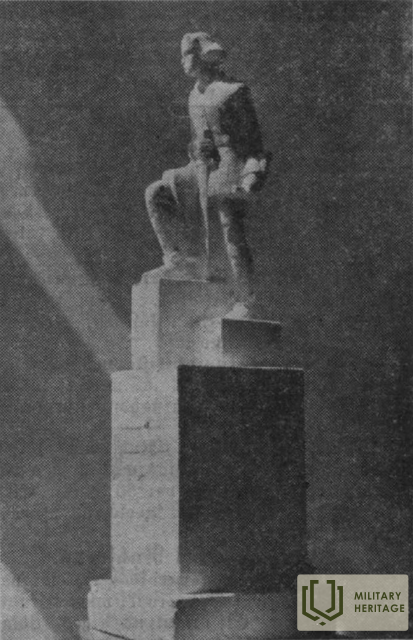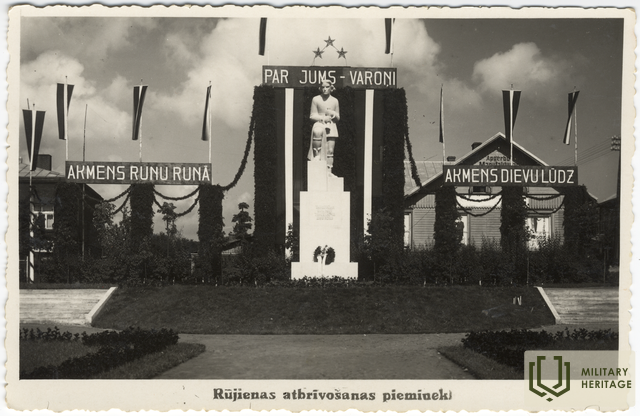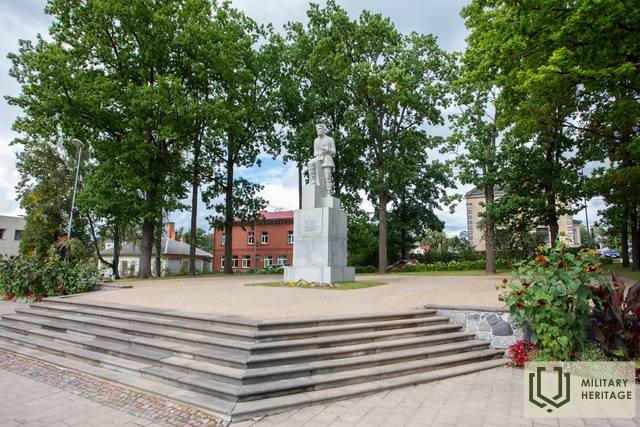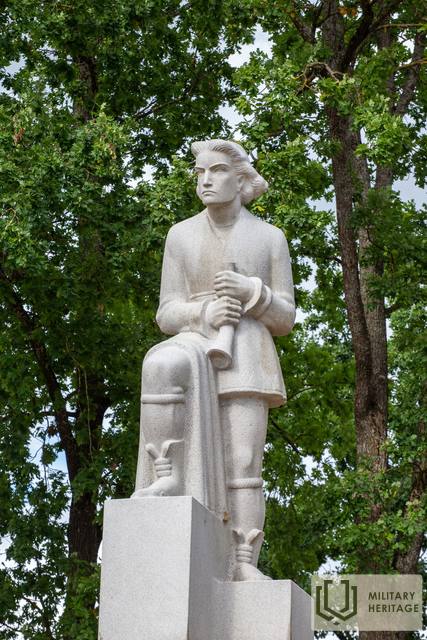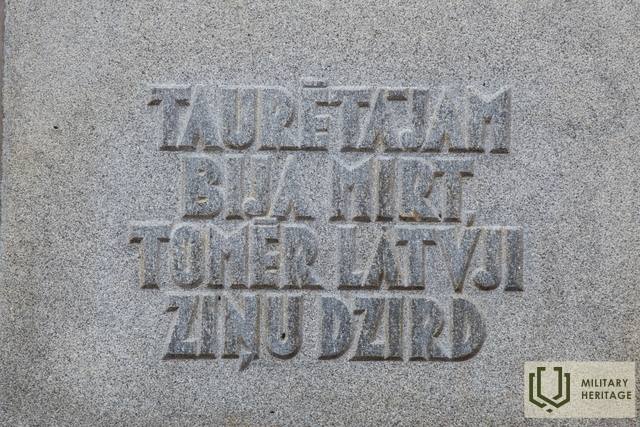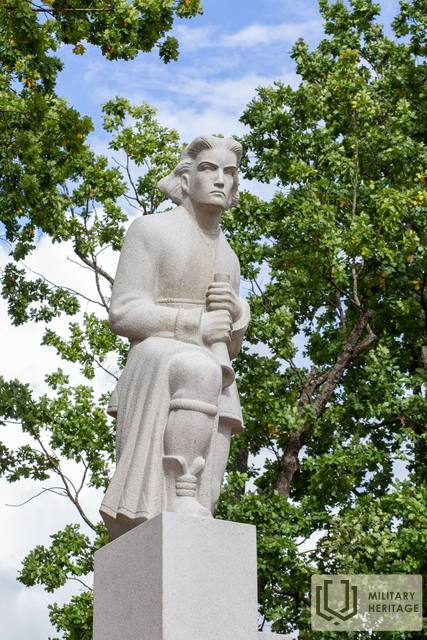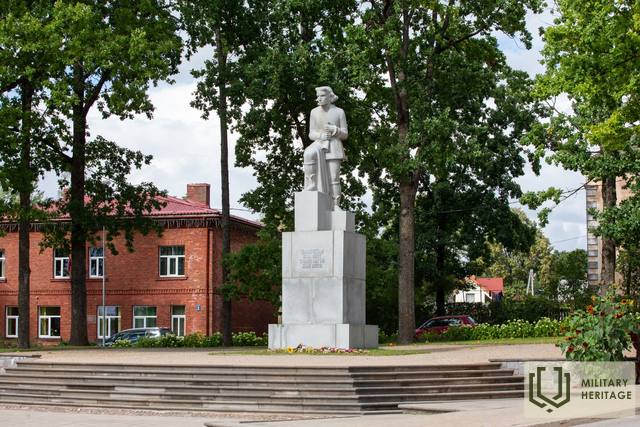Paminklas „Talavos trimitininkas“
Memorialinis vieta
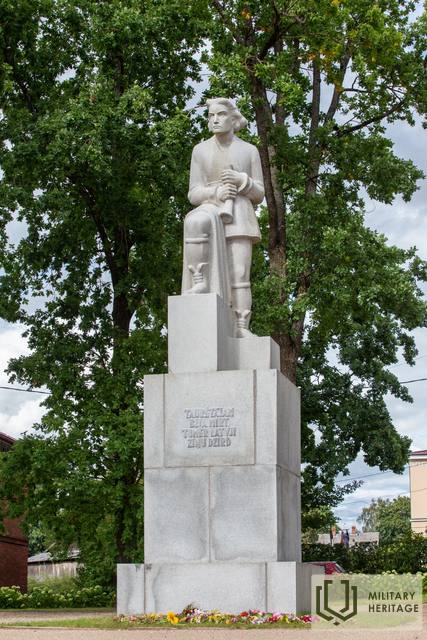

 152
152



Located in Rūjiena Center Square.
The three-meter-high image of an ancient Latvian guardian carved in gray Finnish granite, called the “Tālava trumpeter”, is placed on a three-meter-high granite pedestal, but the total height of the monument reaches 7.5 meters. In the initial sketches and models, K. Zemdega had placed a sword in his hands, which was later replaced by a trumpet. The monument was unveiled on August 15, 1937.
This monument reflects the difficult situation in the formation of our country and army, as well as in the assessment of these events. Immediately after the proclamation of the Latvian state, the Red Army invaded and the interim government of Kārlis Ulmanis established a refuge in Liepāja. In February 1919, with the help of the Estonian army, the liberation of Latvia from the north began and the first mobilization took place in the Rūjiena area for the Latvian troops formed in Tartu, which became the Northern Latvian Brigade under the command of Colonel Jorgis Zemitans. The Northern Latvian brigade fought not only against the Bolsheviks, but also against the Landeswehr and Iron Division in the battles of Cēsis. The soldiers of Northern Latvia, mobilized in the vicinity of Rūjiena, also fought in the subsequent battles for the War of Independence. After the war, the main laurels were won by General Jānis Balodis and the Southern Latvian Brigade he commanded, but he often forgot about the Northern Latvian Brigade. The monument to Rūjiena, which was planned in Rūjiena, was built for a long time, and the monument, unveiled in 1937, was officially popularized as a monument to the liberation of Rūjiena and the memory of fallen soldiers, not to mention the beginning of all regiments in Northern Latvia.
The monument is not only a popular sight for Latvian and Estonian tourists, which is to some extent a starting point for visiting several other places of remembrance of the War of Independence in Rūjiena, but "Tālavas taurētājs" is also a stopping place for Estonian and Latvian officials of various levels.
The monument to the liberation and fallen soldiers of Rūjiena, more commonly known as the “trumpet of Tālava”, was included in the list of cultural monuments protected by the state as an art monument of national significance on October 29, 1998 (monument protection registration number 4522).
Panaudoti šaltiniai ir literatūra:
Dr.hist.Tālis Vigo Pumpuriņš
https://karavirukapi.blogspot.com/2020/01/rujiena-atbrivosanas-piemineklis.html
Susijusi laiko juosta
Susijusios temos
Susijusi istorija
Apie tautos patriotą pirmąjį leitenantą Vilį Gelbį
Pulkininko leitenanto Vilio Gelbės (1890-1919) likimas atspindi sunkią mūsų valstybės ir kariuomenės formavimosi situaciją bei šių įvykių vertinimą.
1918 m. lapkričio 18 d. paskelbus Latvijos valstybę, prasidėjo ir jos Nepriklausomybės karas bei ginkluotųjų pajėgų kūrimo darbai. Latvių karių savanorių priešakyje buvo Kuržemėje gimęs karinio jūrų laivyno leitenantas Vilis Gelbė.
Šiaurės Latvijos kariuomenės įkūrimo Rūjienos pusėje fragmentas
Šiaurės Latvijos armija buvo Latvijos karinė formacija Latvijos nepriklausomybės karo metu, kuri buvo suformuota 1919 m. vasario 3 d. – kovo 31 d. Estijos teritorijoje ir Estijos kariuomenės išlaisvintuose šiauriniuose Vidžemės regionuose. Iki 1919 metų liepos brigada logistikos ir operacijų atžvilgiu buvo pavaldi Estijos ginkluotųjų pajėgų štabui ir Estijos kariuomenės vyriausiajam vadui. Tada ji buvo sujungta su Pietų Latvijos brigada ir suformuota Latvijos armija.




